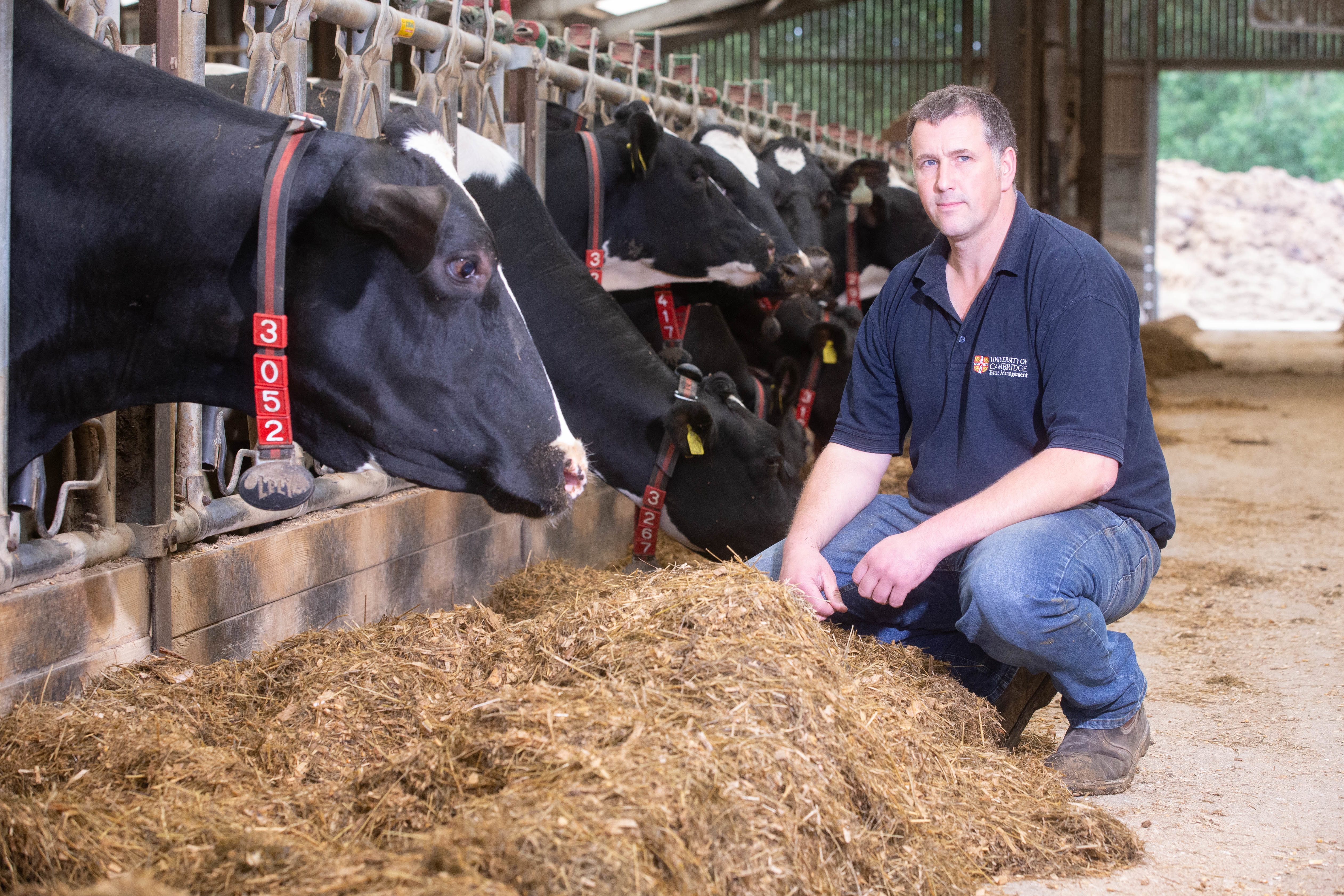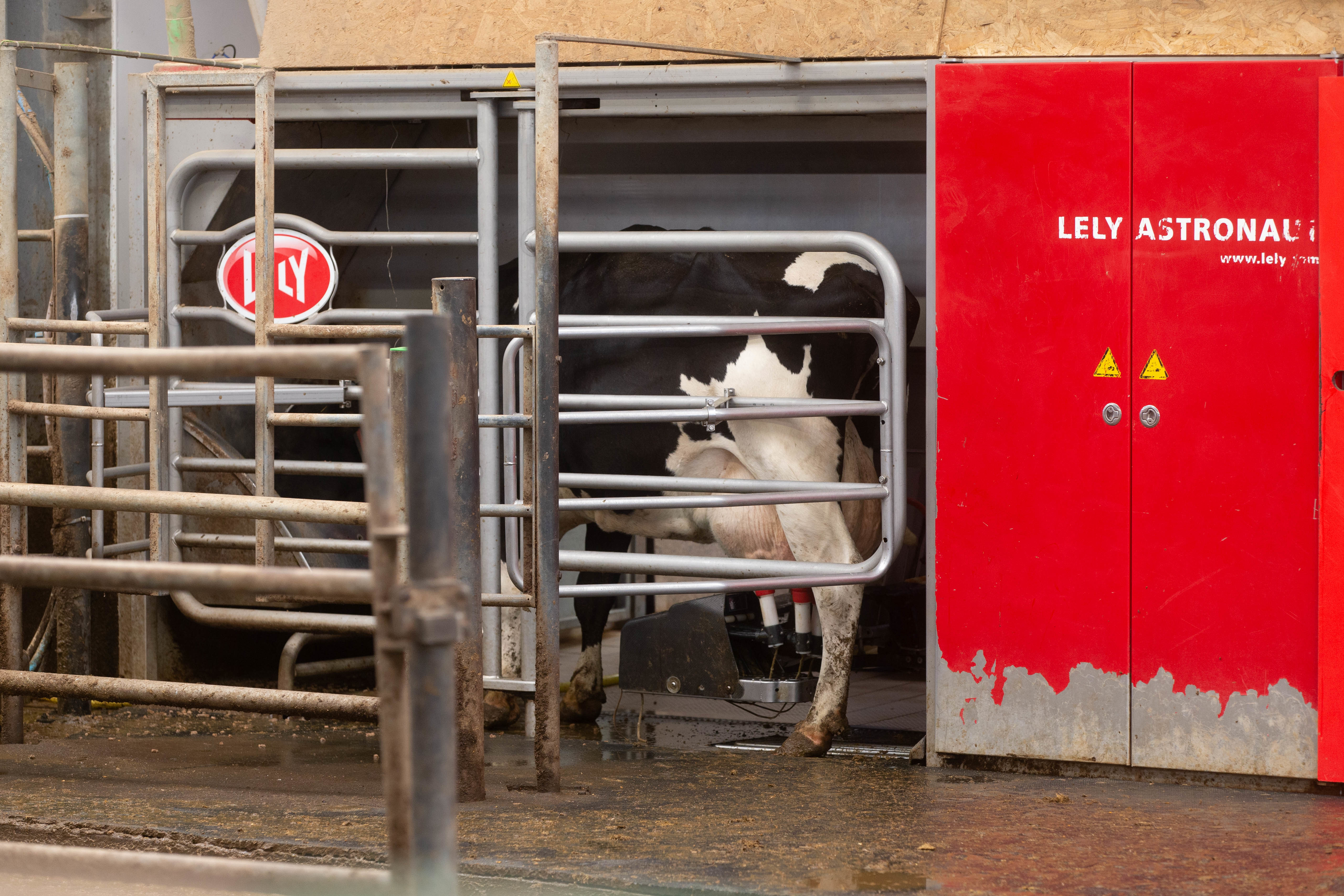Bringing multi-cut silage benefits from Scotland to the dry East
23 February 2021
Moving to an area with half the rainfall and introducing multi-cut grass silage in the dry summer of 2020 wasn’t without its challenges. But it’s already paying off for Cambridge University dairy farm manager, Paul Kelly.

Introducing a multi cut system
It was experience gained making multi-cut silage while working for SRUC in Dumfries that convinced Paul Kelly it was the right system to introduce when he took up his new role of dairy farm manager at Cambridge University Farm in August 2019.
Despite 2020 being a particularly challenging season for growing grass in the dry east of England, it’s a decision he doesn’t regret.
Silage production from the 2020 grass crop at Cambridge University Farm exceeded clamp capacity, and analysis indicated that quality was at least as good as, if not better than, the historic average. Moreover, when the farm’s Cantab herd of year-round-housed pedigree Holstein Friesians was switched to the multi-cut in September 2020, average milk yield increased and it allowed concentrate use to be reduced.
“Multi-cut is becoming more fashionable and I bought into the practice of cutting grass younger for its higher energy content,” Paul explains.
At the end of the day, sustainability and reducing purchased feed use are on everyone’s mind. The benefit from multi-cut is that it comes through to reduce feed rates. Yes, the grass is shorter when it’s cut, but regrowth is that much quicker.
Focus on calf and herd health
A total of 692 ha is run by Cambridge University Farm – comprising 128 ha of temporary grassland, 65 ha of maize, 80 ha of permanent grass and parkland, and 89 ha of woodland/scrub. The remaining 265 ha is arable land farmed under a contract farming agreement by another farm. Soils are primarily boulder clays.
Operations are centred at Park Farm on the Madingley Estate, home to the 210-strong milking herd and 170 followers. Cows are year-round calved, averaging around 9,500 litres/cow at 4.16% butterfat and 3.22% protein.
Feeding is via a TMR of grass silage, maize silage, a protein blend plus minerals, fed once a day, with concentrate also fed when cows are robotically milked.

As well as seeking to reduce purchased feed use, the farm is also focused on herd and calf health. Automatic curtain ventilation is used on youngstock housing and the farm works closely with local company Volac on calf performance. Calves are fed via computerised Förster Technik calf feeders.
Paul continues: “The farm is here to support the university veterinary school and to manage the university land bank. But it also has to be run as commercially as possible.
We do all the silaging ourselves with a forage wagon. Historically, because first-cut has been taken later, the farm has mostly only managed two cuts, occasionally three. In 2020, with multi-cut, we managed four cuts.
In south west Scotland, we were up against the weather because it was too wet. Down here it’s too dry. Average annual rainfall is 550mm. Dumfries averaged 1100mm. The dry conditions have taken some getting used to,” he admits.
Using a proven silage additive
With a focus on good silage, the additive Ecosyl was applied as an integral part of the multi-cut system to improve the fermentation, Paul having previous experience of it in Scotland.
I used Ecosyl at SRUC and got on well with it. By adding good bugs and speeding up the process for it to stabilise in the clamp, you’re getting a better quality product. That’s important because more milk from forage is what we need.
Ready to make Ecosyl an integral part of your silage making? Find out more about using Ecosyl today.
Despite the summer drought, Paul says the farm ended up with three full clamps of quality silage, producing an estimated 2,100 tonnes from 94 ha. Cuts were taken on 26 April, 28 May, 5 July and 1 September. “Twenty hectares of fourth cut had to be baled because there was no room in the clamp,” he points out.
Improving quantity and quality of silage
But in addition to producing more silage, there were also clear signs of quality improvements with the multi-cut. Metabolisable energy (ME) was often above the historic four-year average. Indeed, at 11.1 MJ/kg DM, first-cut ME was 0.8 MJ/kg DM above the average, and crude protein content was increased from 13.2 to 15.8%.
Paul says: We started feeding this year’s silage around 18 September. The cows took to it very well. Milk yield went up by about 1 litre/cow/day. We’ve also been able to reduce the amount of protein blend we feed by about 0.5 kg/cow/day.
An improvement of 0.5 MJ/kg ME is worth £6,000/year to the business based on comparative concentrate costs, he adds.
As well as being able to feed less blend, other savings have also been made in bought-in feeds. These have included moving away from sealing clamps with a layer of citrus pulp to using conventional black plastic weighted with lorry sidewalls. A total of 5p/litre has been shaved off purchased feed.
“The 5p/litre saving is only on six months of the financial year. I think by the end of the financial year we could see further savings because we’ll have had a full year’s benefit. I’d like to get down to 8p/litre purchased feed.”
Next steps for consistently better silage
However, moving to multi-cut hasn’t been plain sailing, and further changes to exploit the system’s potential are needed, Paul believes.
“In Dumfries we tedded straight after the mower. Down here, some cuts dried out too quickly, so we can’t ted immediately after. I think we’ll have to row up the grass directly behind the mower to conserve some moisture in the swath.
“We also need to ensile quickly. Historically some grass was left for two days because we used the same tractor for mowing and towing the forage wagon. But we’ve now purchased a second forage wagon and have a local contractor coming in to help out.
We also need to look at grass varieties. Currently we use two-year leys that don’t cope well with drought conditions, and they don’t have any clover in. So I’m investigating four-year leys with high sugars and extra clover.
“And we need to consolidate better in the clamp. We used to use the telehandler to clamp silage, but I’ve now purchased a buckrake for the tractor so clamping will be better.”
Research points to better multi-cut preservation
The case for preserving silage with an additive becomes even more compelling if making multi-cut, says Howard Gilbert, business development manager for Volac, who works closely with Paul Kelly.
Shorter intervals between applying slurry and harvesting with multi-cut can increase the risk of slurry bacteria, while a higher protein content in younger grass can buffer the fermentation. Both of these can increase dry matter losses, Howard explains.
Research we conducted in South Wales showed that leaving multi-cut silage untreated resulted in nearly 10% loss in its dry matter content. By comparison, where it was treated with Ecosyl, not only was the fermentation faster, but the average DM loss was nearly halved. There was also evidence that less protein was broken down with the additive. Howard confirms.
Ready to make Ecosyl an integral part of your silage making? Head over to our online order form today.